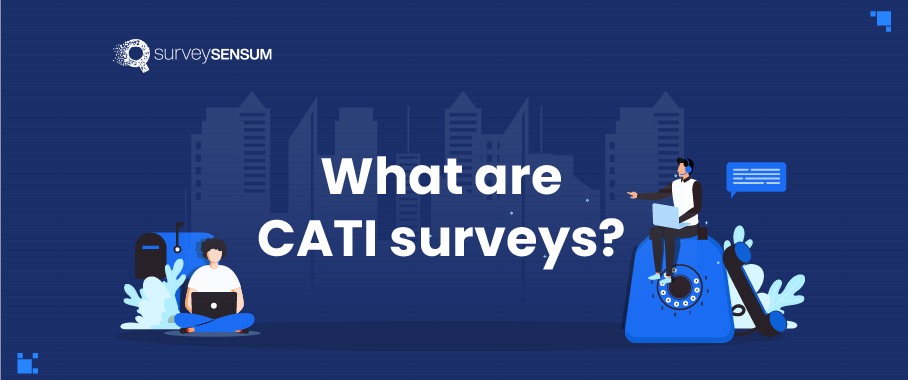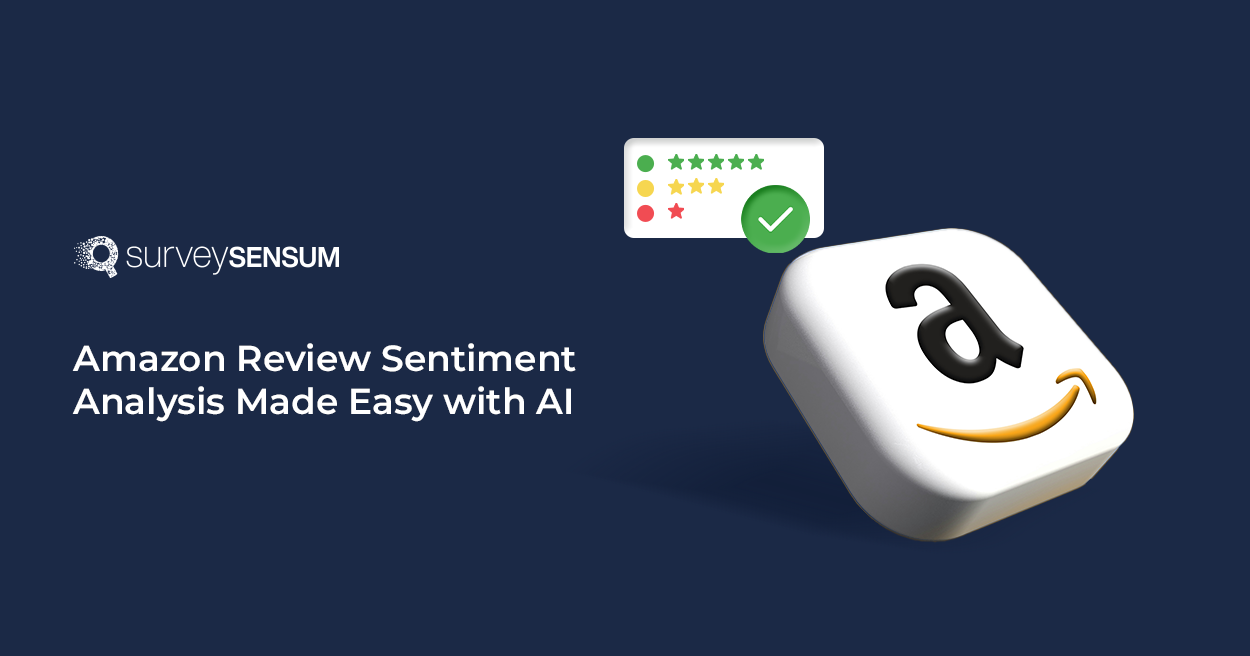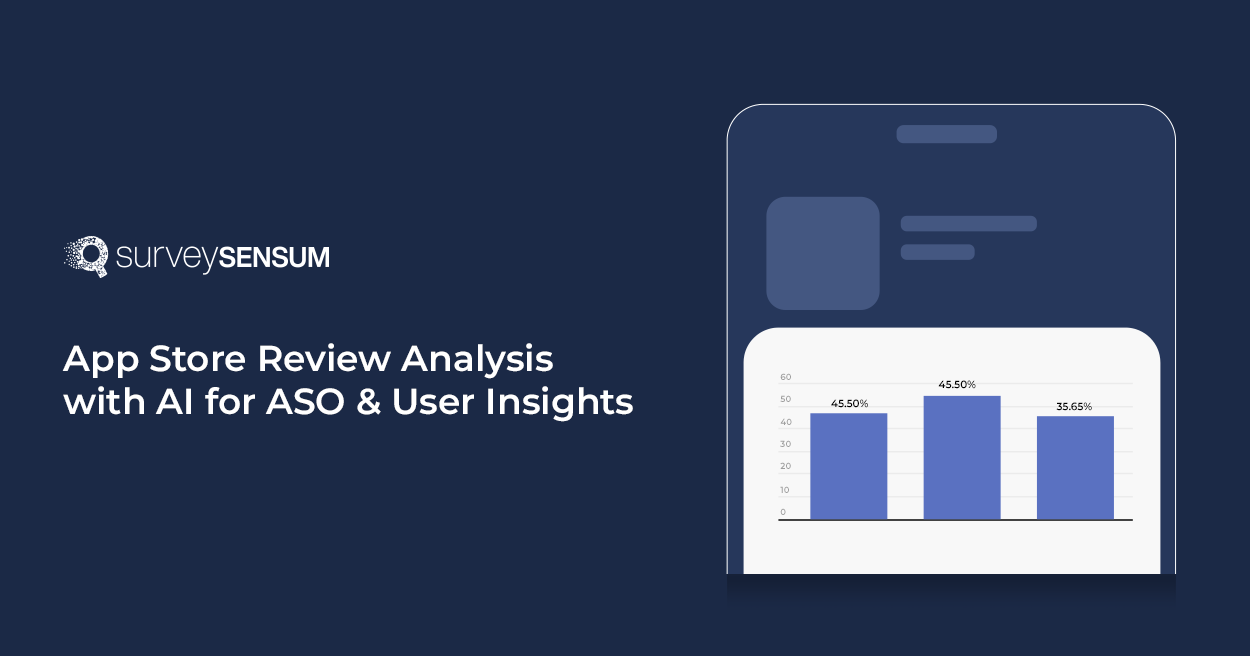

Have you recently bought a car?
After buying a car or any other product, you must have received a phone call asking for your feedback on the purchase.
On the call, an interviewer will talk about your buying experience, product experience, or service experience.
This phone call is called CATI – Computer-Assisted Telephonic Interview.
Let’s understand this.
So, what is CATI survey?
CATI, or computer-assisted telephonic interview, is a traditional research method where interviewers ask some questions to the respondents over the phone call.
Basically, the interviewer reads a set questionnaire from the computer, gathers respondents’ answers, and punches it into the system (or sometimes the software automatically records it). CATI is similar to paper surveys, except everything is done online.
But, why CATI or say – telephone surveys?
CATI interview is basically a better alternative to the traditional pen-and-paper data collection process. It creates more of a casual relationship with the respondents as they directly share their feedback with the surveying organization.
And unlike paper surveys, the interviewers only have to focus on gathering the feedback instead of bothering about the complex work of managing that feedback. This helps them create a better relationship with the respondents and improves the data quality.
The survey organization could be a brand or a third-party agency.
Then, how does CATI work?
All the interviewers need is a phone and an internet connection. The contact info of the respondents is automatically displayed to them in the CATI interface. All they have to do is follow the script (which includes the introduction of the survey, the questionnaire, and the conclusion) shared on the screen and punch in the respondents’ feedback. Or many CATI software automatically records the responses.
An ideal CATI software helps you set and manage respondents’ call records with no data loss, quota, or delays, helps you schedule appointments, and manages the database as per the administrator’s settings. It also helps you check the answers’ coherence, lets you set control questions, adds logic to the questionnaire, and pauses the interview if the answers are not being recorded properly.
Here’s an example of how the CATI software survey flow works:
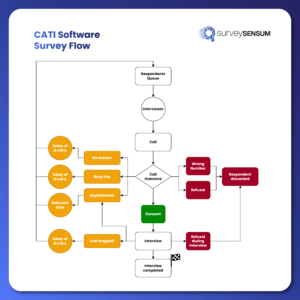
Now that we’ve defined what CATI or telephone surveys are, let’s understand their pros and cons.
Advantages and Disadvantages of CATI
The CATI survey method comes with a few good advantages. Let’s take a look at them:
Advantages of CATI
- Cost-Effective: As compared to face-to-face surveys, CATI surveys are cost-effective as everything can be done remotely.
- Higher Response Rates: Not everyone can reach out to meet you. So, compared to face-to-face surveys, CATI surveys deliver a much higher response rate. Boost your response rate with a robust customer feedback platform like SurveySensum.
- Demographics: As everything is online, you don’t need to be physically present with the respondents. During emergencies or conflict areas, CATI serves as the better option.
- Immediate response: Unlike emails, you can gather immediate responses from the respondents.
- Personalization: Since you are directly talking to the respondents, you can add a personal touch to your calls, creating a relationship with them. However, this is not applicable if a third party is taking your CATI surveys.
- Eliminates manual errors: When you use good CATI software, it automatically captures all the respondents’ feedback eliminating all the processing errors, manual mistakes, and redundancies and improving uploading time.
- Qualitative feedback: CATI or telephone surveys are best used for qualitative interviews where you need to have a conversation with the respondent to understand their feedback and explain your questions properly.
While there are many advantages to CATI, it comes with its drawbacks. Here are some of the few:
Disadvantages of CATI
- Interviewer training: Interviewers don’t know about your business and neither do they care, especially third parties. Questions have different meanings if not asked properly. That’s why, for every research, you need to train the field agents or interviewers on how to ask those questions.
- Low Data Quality: When respondents get confused about a question, they ask interviewers about it. When the interviewers don’t know how to respond, respondents get frustrated and do not answer properly leading to low data quality.
- Less honest answers: Respondents are much more polite over the call as compared to online surveys. That’s why they give much higher ratings than they actually want to.
- No one has the time for long questionnaires: Sometimes your surveys are more than 15 questions long, do you believe the respondent has time to answer those questions? They don’t, they simply disconnect the call.
- Low response rate: You have to understand that telephone surveys interrupt you while you work. And especially if they take too much time you simply don’t respond. That’s why they have low response rates.
- No concept or ad testing: There are many companies trying it over CATI, but it really is not advisable to explain a concept to a respondent over the phone.
- Not real-time: It takes a minimum of a month for an agency to run an analysis on CATI surveys. And when you call a dissatisfied customer after a month of their interaction with you, they usually don’t even remember it. Moreover, by the time you get the analysis and act on the feedback, it’s already too late.
- Cost: On average, you have to pay between 5-10 dollars per response for a CATI survey. Now, if you have to gather 20k responses every year that means 100k-200k dollars a year, which is too much. There are much better and more affordable ways to gather responses.
Not just drawbacks, there are a few challenges that CATI counters.
Challenges in Using CATI
- Not just the survey questions, interviewers must be trained on the CATI software as well so that they can use it properly.
- Sometimes, the questionnaires get scripted incorrectly into the software. The interviewers must have an idea of the objective of the survey so that they can identify such mistakes.
- Some CATI software doesn’t give the option to go back and edit previous answers. This sometimes leads to low data quality.
- When there are two surveys taking place simultaneously, the analysis of the data gets hampered.
But if CATI or telephone surveys are not the right approaches, what is?
Digital Surveys!
Introducing Digital Surveys
Digital surveys or online surveys are questionnaires sent to the respondents on the channels they prefer. It can be emails, chatbots, in-app, WhatsApp surveys, etc; allowing them to take the survey in their own time and speed.
And not just that, digital surveys can be personalized and analyzed much more lucratively.
Launch Personalized Surveys with SurveySensum!
How Digital Surveys are Changing the Market Research Landscape?
Digital or online surveys provide cost-effective, efficient, and convenient data collection methods. They allow businesses and market researchers to reach a broader and more diverse audience, providing more accurate and representative data.
One of the most significant advantages of online surveys is their cost-effectiveness. They are cheaper than traditional methods such as CATI (Computer-Assisted Telephone Interviewing) surveys. Additionally, they can be administered to a large number of participants in a short period of time, providing a high survey response rate.
It also offers a greater level of flexibility and convenience. Participants can complete surveys at their own pace and from any location, making it easier to reach a diverse audience. The data collected can also be analyzed in real-time, providing immediate insights for businesses and researchers.
Online surveys have opened up new opportunities for data collection and analysis. Especially with mobile devices and social media platforms making it possible to conduct surveys in real-time and gather data from a wider range of participants.
CATI Surveys vs Digital Surveys
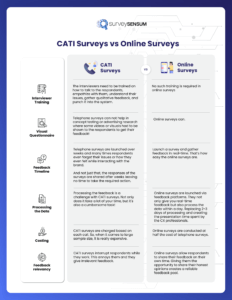
Many big organizations like Manulife, Daimler, and Inodlife have shifted from CATI surveys to online surveys.
If you also face some of the challenges mentioned with the CATI surveys, try out online surveys!
Takeaway
In conclusion, CATI surveys have been a valuable tool for data collection for many years, providing businesses with accurate and representative data.
However, in this digital era, the use of online surveys has become increasingly prevalent. They offer a cost-effective, efficient, and convenient method to collect data and allow businesses to reach a wider and more diverse audience.
It’s important to note that CATI surveys are less viable in today’s digital world, as many people are not reachable by phone or may not be willing to participate in phone-based surveys. As a result, online surveys have become the go-to method for data collection, providing more accurate and representative data and real-time insights.
At SurveySensum, we understand the importance of accurate and representative data, and we’re here to help you transform into the world of digital surveys.






